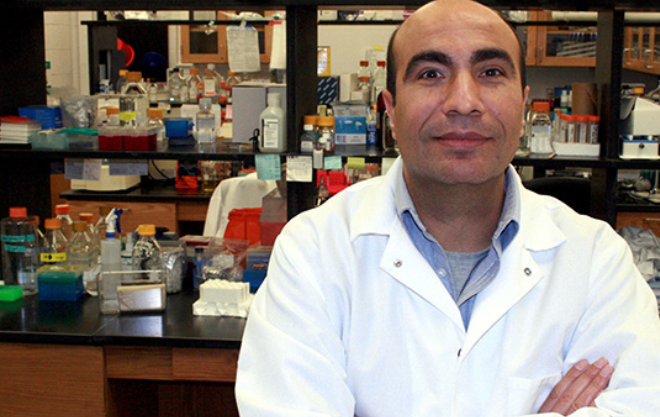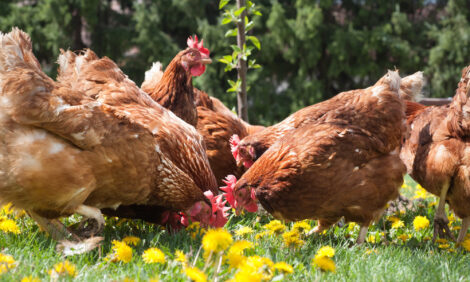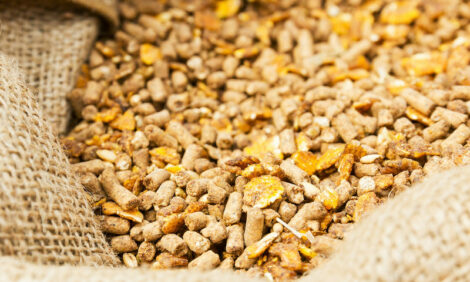



Campylobacter in poultry: An elusive pathogen
Campylobacter — primarily Campylobacter jejuni and Campylobacter coli — frequently colonize the intestinal tract of domestic poultry at high levels. The bacterium is well adapted to the avian host and, despite extensive colonization, it produces little or no overt disease in poultry. That makes it difficult to detect and control in live birds.By Orhan Sahin, DVM, PhD, Dip ACVM
Assistant Professor
Veterinary Diagnostic and Production Animal Medicine
Iowa State University, Ames, Iowa
Despite its insignificance for poultry health, Campylobacter is a leading cause of foodborne gastroenteritis in humans worldwide. In the US, it’s responsible for over 800,000 cases of foodborne illnesses and over 8,000 hospitalizations each year. [1] The poultry reservoir, especially broiler meat, is the most commonly recognized source for human Campylobacter. [2]
As such, major efforts from the industry, government and academia have been devoted to the development of interventions to diminish Campylobacter contamination in poultry and thus reduce the burden of foodborne illness in humans. Poultry producers are certainly familiar with USDA’s Food Safety and Inspection Service (FSIS) performance standards for Campylobacter, aimed at reducing carcass contamination and subsequent human exposure, [3] but keeping this pathogen at bay remains a significant challenge.
Prevalence
Campylobacter is, in general, highly prevalent on poultry farms, but the prevalence varies by region, seasons and production types, with reported Campylobacter-positive flocks ranging from 2% to 100%. [4] Once a broiler flock is infected with Campylobacter, the majority of birds become colonized within a few days, and the overall within-flock prevalence reaches very high levels by processing age, leading to increased carcass contamination. [4]
In a study colleagues and I conducted involving the US commercial broiler production system, we found Campylobacter in 45% of flocks and on 93% of farms. [4] Interestingly, we also found a substantial variation in Campylobacter prevalence, with some houses and farms consistently producing Campylobacter-free or Campylobacter-positive flocks over multiple production cycles.
Valuable information for the development of effective on-farm interventions may be gained from careful investigation of such farms and houses in the near future. Indeed, our analyses indicated that litter treatment (more on that later) and keeping the house ammonia level below 25 ppm were associated with low Campylobacter prevalence. Not surprisingly, decreased paw quality/increased percent burnt was associated with a high Campylobacter prevalence.
A unique feature of Campylobacter ecology in poultry is that birds younger than 2 to 3 weeks of age are almost never colonized by the organism in commercial production settings, which implies that young birds have a biological mechanism for colonization resistance. If the reasons for this colonization resistance are revealed, they could be used to design effective strategies to prevent birds from getting infected.
Source of infection
Campylobacter is ubiquitous in the poultry farm environment, and the sources of flock infection and risk factors influencing Campylobacter introduction are complex.4, [5] Overall, horizontal transmission from environmental sources is the primary way flocks become colonized.
Some of the most common factors associated with Campylobacter colonization in commercial broilers are poor farm biosecurity; the presence of other animals in the vicinity of poultry houses such as other poultry species, livestock, pets and wildlife; older processing age; large flock size; the use of ventilators; the presence of flies and rodents; and the use of old litter. Campylobacter can be introduced onto poultry farms by farm equipment, transport vehicles and farm workers. The prevalence of colonization tends to be much higher during hot weather.
Notably and in contrast to the situation with Salmonella, vertical transmission from breeder flocks via eggs to broiler chickens is not a significant source for Campylobacter introduction into the broiler house. Similarly, feed, fresh litter and water are not among the known sources for the initial introduction of Campylobacter.
Preharvest control
Because Campylobacter is common in the farm environment and can contaminate poultry houses via many different routes, preventing flock colonization with this organism is not an easy task, [4],[6] but here are some methods that may help.
Biosecurity and hygiene: Implementing strict biosecurity and good hygiene measures can help prevent Campylobacter from entering the broiler house from the outside environment. There’s a downside though. These measures can be cost-prohibitive and hard to maintain, and their effect is not always consistent.
Treatment of drinking water: Acidification of drinking water with organic acids such as lactic acid, acetic acid or formic acid and water chlorination, especially when combined with other approaches, may decrease the risk of Campylobacter colonization in broilers.
Litter treatment: Acidification of litter with aluminum sulfate and sodium bisulfate may decrease Campylobacter colonization frequency and cecal loads. Litter treatment with a combination of sodium bisulfate, ammonium sulfate and magnesium sulfate can significantly reduce the pH and moisture of litter as well as the numbers of contaminating Campylobacter, subsequently reducing colonization of chickens.
Feed additives: A combination of 2% formic acid and 0.1% potassium sorbate in feed has been shown to be effective for preventing the colonization of broilers. [7]
Immune intervention: Despite extensive efforts worldwide in vaccine development, chicken trials have shown mixed and limited success with different vaccination regimens to help prevent Campylobacter, but currently there is no commercial vaccine available. The short lifespan of broilers, a lack of understanding about protective immunity and the pronounced antigenic variability of different Campylobacter strains have made it difficult to develop effective vaccines. Very recently, however, glycoconjugate vaccines have shown promise for reducing Campylobacter colonization in chickens,8 suggesting that an effective poultry vaccine might be on the horizon.
Postharvest control
High numbers of Campylobacter in the intestinal tract result in contamination of poultry carcasses during processing due to spillage of fecal material. [4],[9],[10] The prevalence of Campylobacter on poultry carcasses at the end of the processing line (post-chill) is usually over 50% and varies between 0% and 100% worldwide. The multiple steps involved in poultry processing — stunning and bleeding, scalding, defeathering, evisceration, washing, chilling and post-chill treatments — can all affect carcass contamination by Campylobacter.
Potential interventions aimed at reducing Campylobacter counts on poultry carcasses have been investigated in multiple studies. These have included freezing, hot water treatment and irradiation. Since fecal release occurs readily during defeathering and evisceration, carcass contamination can be reduced with general equipment sanitation and by multiple rinsing of equipment and carcasses during and after each step with agents such as chlorine, sodium bisulphate, cetylpyridinium chloride, lactic acid and trisodium phosphate.
Carcasses must be free of feces before being put into the chiller, as mandated by FSIS. During immersion chilling, the use of antimicrobials such as chlorine and chlorine dioxide can be highly effective. Post-chill antimicrobial rinses with potable water and dips in antimicrobial solutions can be used to further reduce the level of Campylobacter contamination in poultry meat. It’s worth mentioning that certain carcass decontamination methods used at US processing plants are not allowed in Europe. Considering that the levels of Campylobacter pre-wash versus post-wash can differ dramatically, it will be interesting to see if the ban in Europe will be rescinded in the future.
The prevalence and the quantity of Campylobacter on poultry carcasses post-chill are also influenced by processing-plant-specific factors. Well-designed “process-mapping” studies for determining the impact of each processing step on contamination can help identify processing areas where corrective steps should be taken to reduce Campylobacter carcass contamination.
Conclusions and perspectives
Since Campylobacter is common in the farm environment and can be introduced into poultry houses many different ways, it’s extremely difficult to keep chicken flocks free of this pathogen during the preharvest production stage. Postharvest intervention during processing is also challenging due to the high numbers of Campylobacter in feces and the unavoidable fecal contamination of carcasses during processing.
Each of the control strategies discussed above has certain potentials but may not be sufficient when applied individually. Therefore, it might be more effective when multiple measures are used in combination. However, since use of multiple strategies may prove to be difficult due to practical and economic reasons, additional efforts are critically needed to develop feasible, effective interventions.
Last but not least, consumer education programs on safe food handling and preparation practices in the kitchen may have the “magic power” needed to reduce foodborne illness significantly. For example, many people tend to wash raw chicken before cooking; however, washing raw chicken can actually spread Campylobacter by splashing it onto hands, work surfaces, clothing and cooking equipment.
Our research team hopes to develop new methods for managing Campylobacter throughout the food chain thanks to a grant from USDA’s National Institute of Food and Agriculture. More information about Campylobacter in poultry and proper food preparation methods can be found online at http://www.campypoultry.org/ and http://foodsafety.osu.edu/.
[1] Scallan E, et al. Foodborne illness acquired in the United States — major pathogens. Emerg. Infect. Dis. 2011;17:7-15.
[2] Golz G, et al. Relevance of Campylobacter to public health — The need for a One Health approach. Int. J. Med. Microbiol. 2014 Oct;304(7):817-23.
[3] FSIS-USDA. New performance standards for Salmonella and Campylobacter in chilled carcasses at young chicken and turkey slaughter establishments. FSIS Notice 31-11. 2011.
[4] Sahin O, Kassem II, Shen Z, Lin J, Rajashekara G, Zhang Q. Campylobacter in Poultry: Ecology and Potential Interventions. Avian Dis. 2015;59:185-200.
[5] Newell DG, et al. Sources of Campylobacter colonization in broiler chickens. Appl. Environ. Microbiol. 2003;69:4343-4351.
[6] Wagenaar JA, et al. Preventing Campylobacter at the source: why is it so difficult? Clin. Infect. Dis. 2013;57:1600-1606.
[7] Skanseng B, et al. Prevention of intestinal Campylobacter jejuni colonization in broilers by combinations of in-feed organic acids. J. Appl. Microbiol. 2010;109:1265-1273.
[8] Nothaft H, et al. Engineering the Campylobacter jejuni N-glycan to create an effective chicken vaccine. Sci. Rep. 2016;6:26511.
[9] Rosenquist H, et al. The effect of slaughter operations on the contamination of chicken carcasses with thermotolerant Campylobacter. Int. J. Food Microbiol. 2006;108:226-232.
[10] Guerin MT, et al. The change in prevalence of Campylobacter on chicken carcasses during processing: a systematic review. Poult. Sci. 2010;89:1070-1084.











